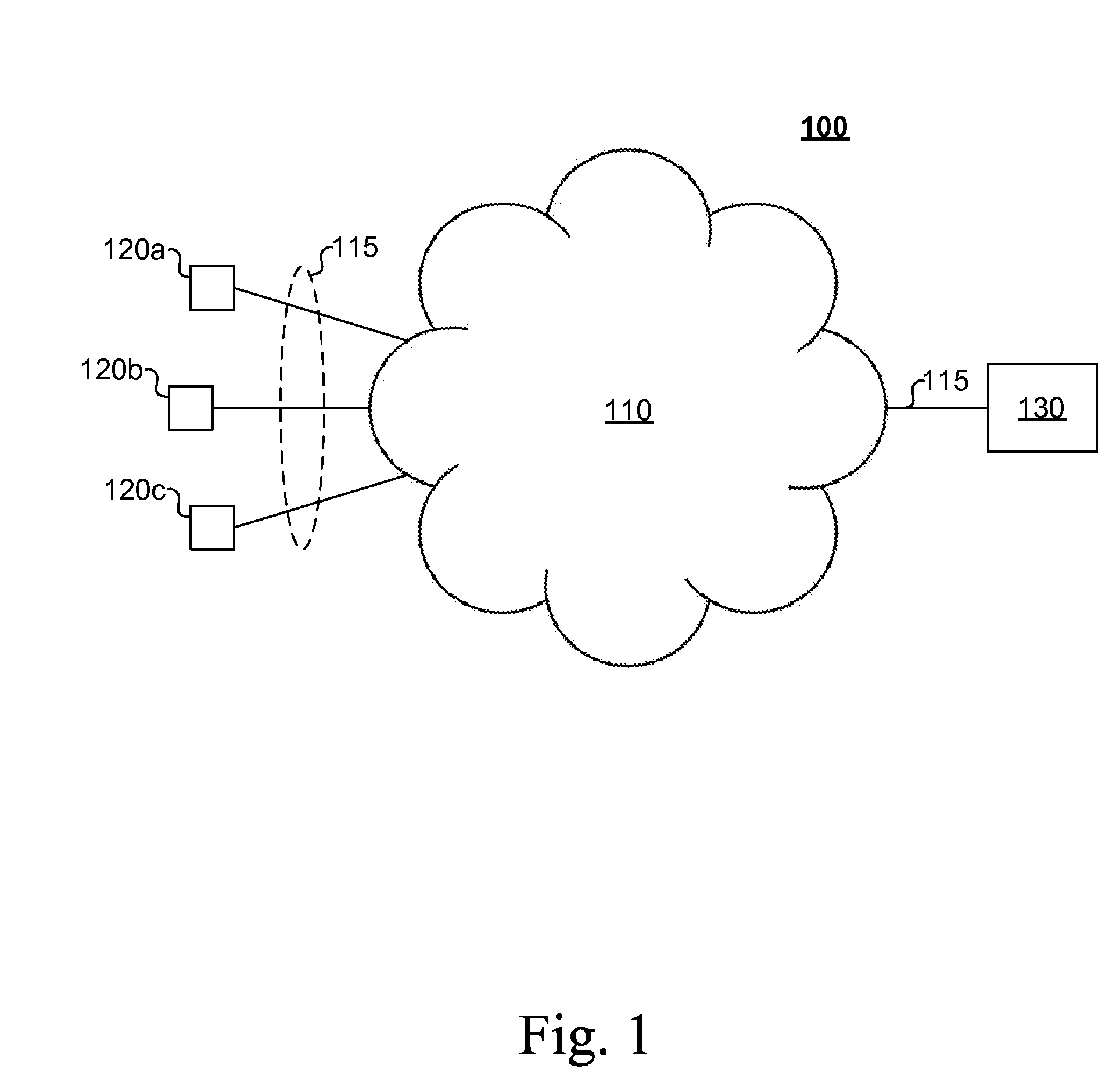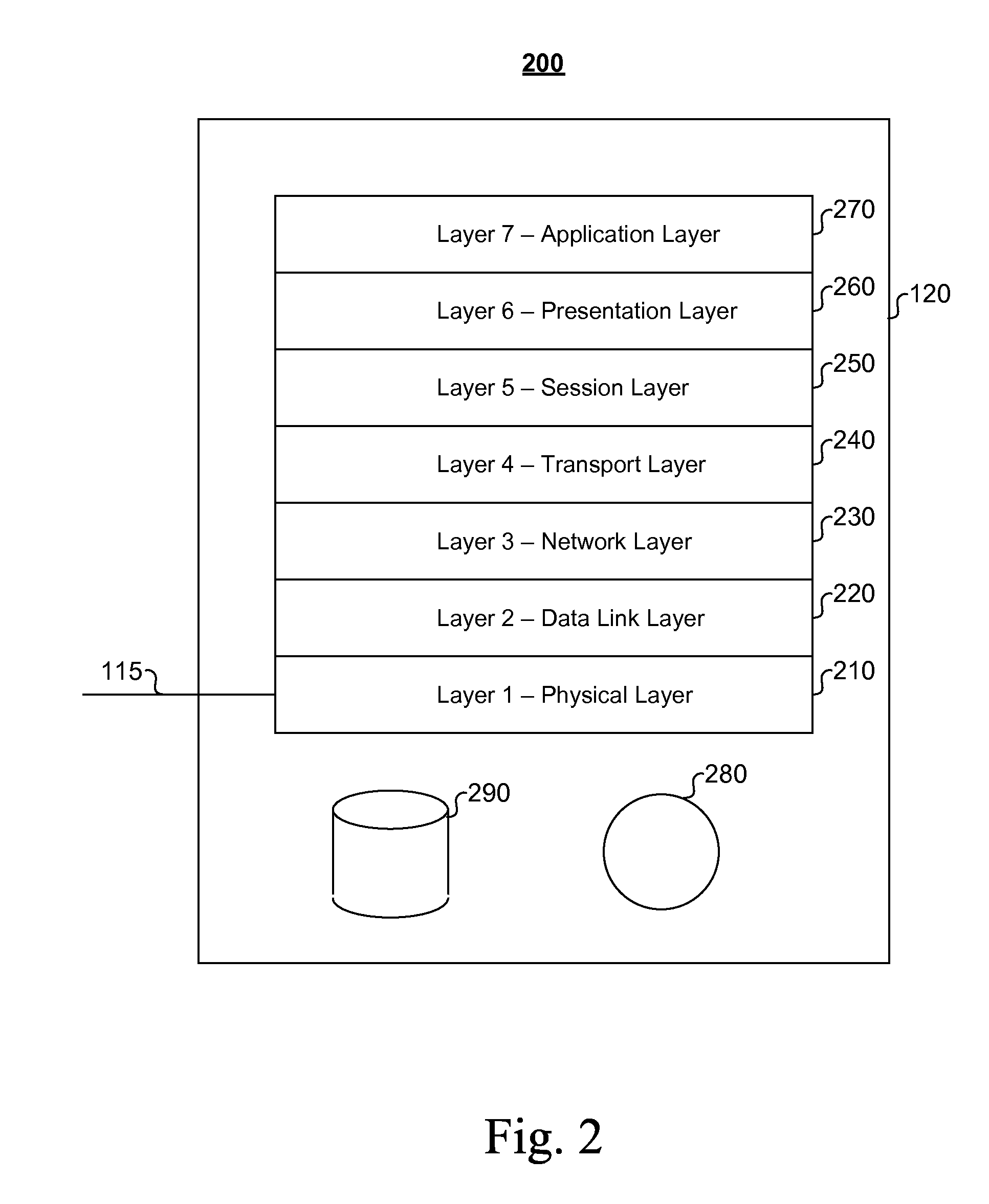Adaptive rate control based on overload signals
a technology of overload signal and adaptive rate control, applied in the direction of frequency-division multiplex, instruments, high-level techniques, etc., can solve the problems of severe reduction of successful service completion, prolonged overload of servers, unavailability of clients' services, etc., to maximize server throughput, control stability, and reduce the effect of server load
- Summary
- Abstract
- Description
- Claims
- Application Information
AI Technical Summary
Benefits of technology
Problems solved by technology
Method used
Image
Examples
Embodiment Construction
I. Network Overview
[0031]FIG. 1 is a block diagram showing an exemplary network 100 with devices relating to servers processing service requests from clients. Network 100 includes transmission medium 110, one or more clients 120a, 120b, and / or 120c, generally 120, and at least one server 130. Transmission medium 110 (e.g., a communications network) is responsible for the transfer of information, including requests for services, between one or more clients 120 and / or server 130. As described in more detail below, the clients 120 are configured according to some of the inventive techniques described herein.
[0032]Transmission medium 110 can be coupled to clients 120 by connections 115. Clients 120 can be any devices capable of requesting one or more services from server 130. Clients 120 can include user devices such as computers, telephones, IP phones, mobile devices (e.g., cellular phones, personal digital assistant (PDA) devices, laptop computers, and / or the like), and / or other commu...
PUM
 Login to View More
Login to View More Abstract
Description
Claims
Application Information
 Login to View More
Login to View More - R&D
- Intellectual Property
- Life Sciences
- Materials
- Tech Scout
- Unparalleled Data Quality
- Higher Quality Content
- 60% Fewer Hallucinations
Browse by: Latest US Patents, China's latest patents, Technical Efficacy Thesaurus, Application Domain, Technology Topic, Popular Technical Reports.
© 2025 PatSnap. All rights reserved.Legal|Privacy policy|Modern Slavery Act Transparency Statement|Sitemap|About US| Contact US: help@patsnap.com



